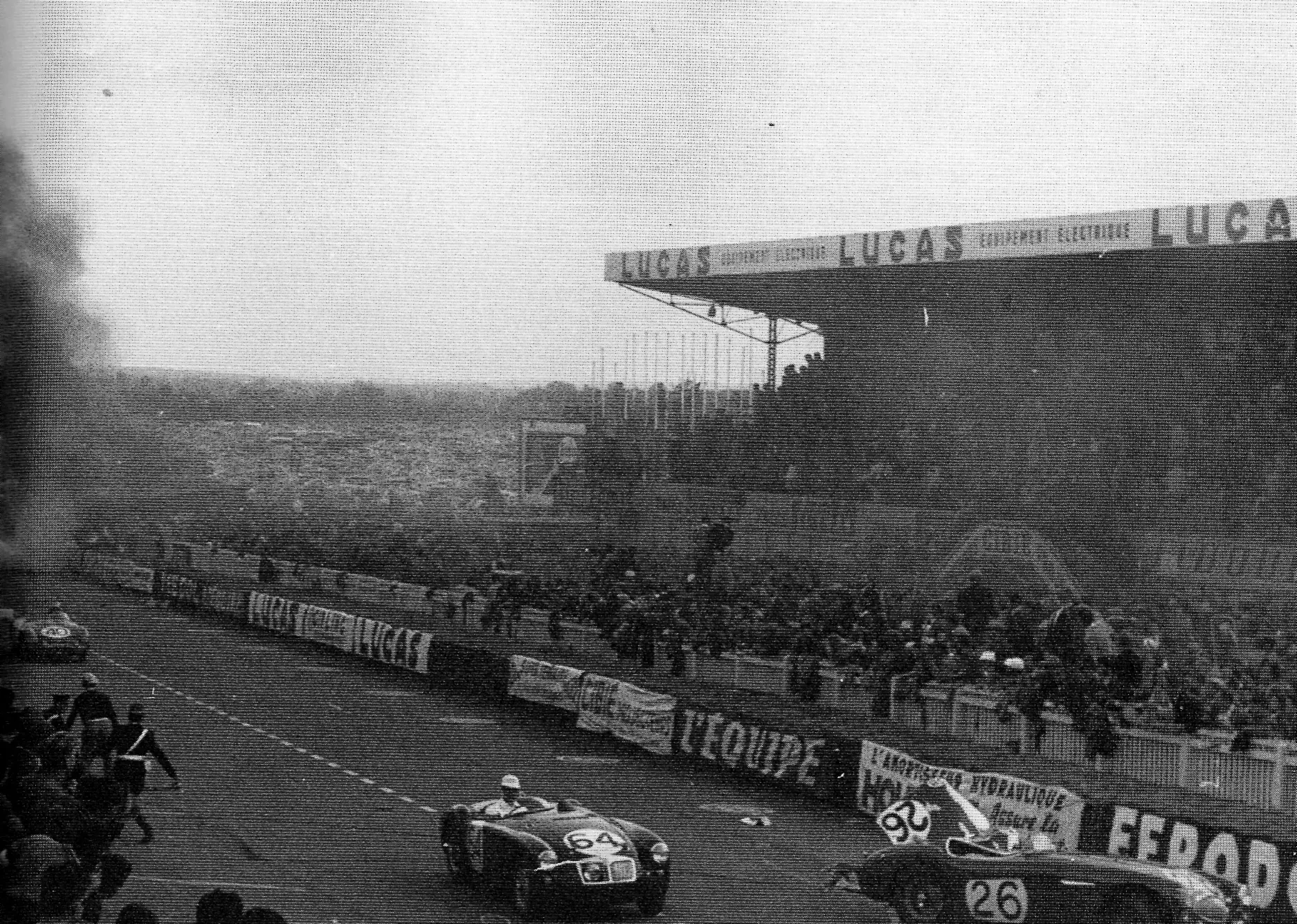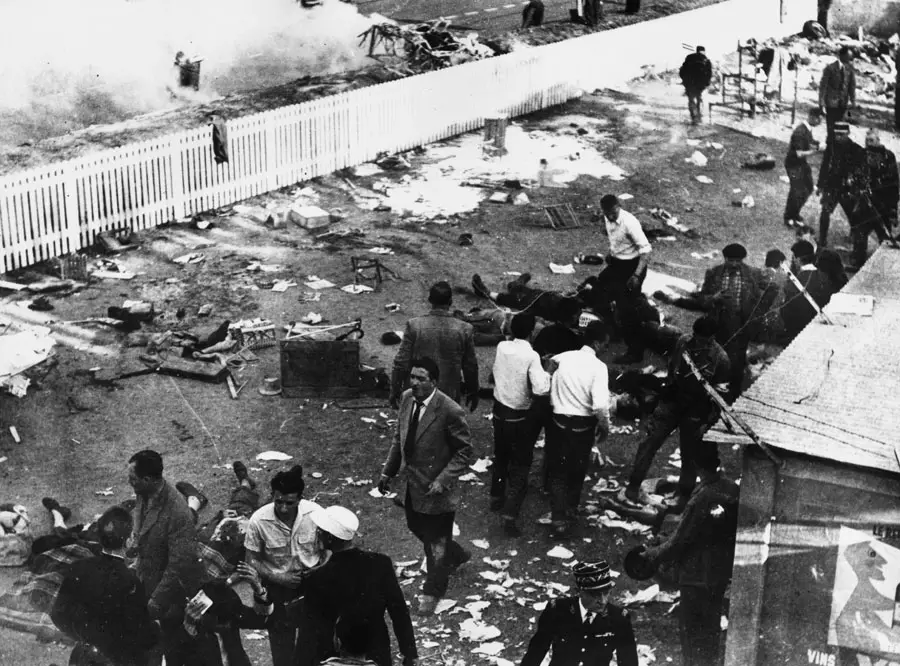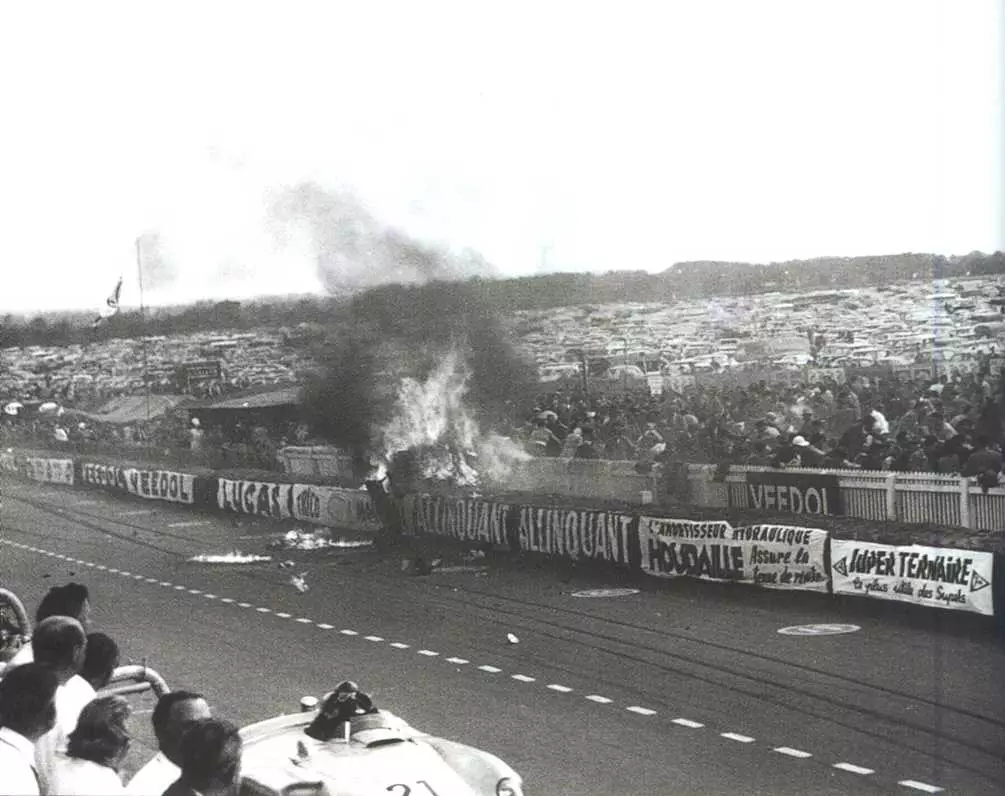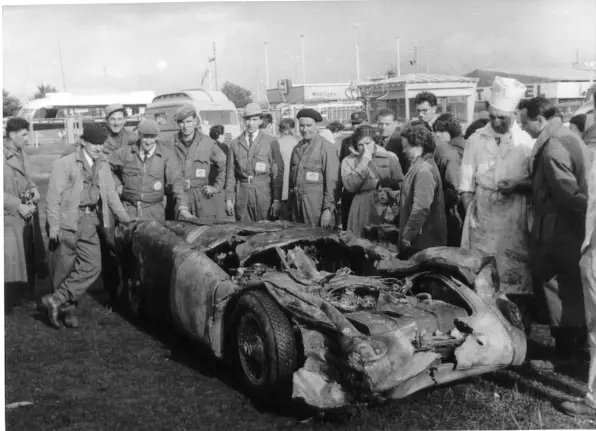At that moment, at the entrance to the pit straight, Hawthorne's Jaguar unexpectedly stopped. Hawthorne had disc brakes and his braking power was far more effective than Macklin's brakes. The seconds that followed at Le Mans turned that moment into one of the darkest in motorsport history.
Sixty years ago (NDR: at the date of this article's original publication) that Saturday, June 11, 1955, was anticipated to be glorious. 250 thousand people applauded the pilots who left for another edition of the 24 Hours of Le Mans.
The names that lined the route made those who traveled to the event simmer with emotion: Juan Manuel Fangio and teammate Stirling Moss were driving a Mercedes 300 SLR; Mike Hawthorn was aboard a Jaguar D-Type. Ferrari, Aston Martin, Maserati, Jaguar and Mercedes fought for the podium, they all followed very close to each other, simply memorable.
At the start of the 35th lap, Hawthorne (Jaguar) and Fangio (Mercedes) took the reins of the race, positioned in first and second place, respectively. Ahead, they found the slower cars, through which they snaked at speeds in excess of 240 km/h and in the fastest parts of the track, they reached 280 km/h.
Coming out of the last corner before the pit straight, Hawthorne meets Lance Macklin's slower Austin-Healey 100 and easily passes it in his Jaguar D-Type. When he's ahead of Macklin he brakes to get into the pits — he almost forgot the fuel instruction.

Behind Hawthorne, Macklin's Austin-Healey 100 struggles to brake in the face of the unexpected deceleration of the car in front. In an attempt to avoid the crash, Macklin dodged to the left of the Jaguar D-Type without noticing that he was being followed by two other cars.
Behind was Pierre Levegh, driving number 20, another Mercedes 300 SLR from the Daimler-Benz team, which was ahead of Fangio on the track at the time. Fangio, who had 2nd place in the table, was preparing to overtake Levegh.
Subscribe to our newsletter
Levegh couldn't avoid the collision with the Austin-Healey 100 and ended up crashing into the left rear side of Macklin's car at over 240 km/h. Macklin's car turns into a ramp and the Mercedes 300 SLR takes off into the crowd.

As it crashed into the back of the Austin-Healey, several parts of the Mercedes flew towards the public. The bonnet hit several spectators like a guillotine guillotine, the front axle and engine block were also designed against those watching the race. At this time Pierre Levegh was also projected from the car, having died immediately. The Mercedes 300 SLR would fall to the public and with the fuel tank broken, it didn't take long for a big fire to start.
Rescue teams were unaware that the chassis that was on fire was made of magnesium. Trying to put out the fire with water was like throwing gasoline into a fire and the fire wouldn't go out until after more than eight hours.
On the track the race continued and after the passage of the fastest cars, the organization removed the Austin-Healey of Macklin from the middle of the track. The numbers that reached the race directors were tragic: 84 dead (including Levegh) and 120 wounded.

In order not to disturb the access of ambulances to the circuit, with the departure of a crowd of spectators, the organization decided to continue the race. That night, at 00:00, after a meeting between the directors of Daimler-Benz, Mercedes abandons the race.
They were leading the race, while Jaguar refused to leave and won the 24 Hours of Le Mans in 1955. The next day the newspapers showed images of the tragedy and next to these was a record of Hawthorne drinking champagne on the podium .
This tragic accident led some brands to take drastic decisions and more: Switzerland, for example, banned motor sport. Mercedes abandoned motorsport and only got directly involved in a race in 1987 and Jaguar, probably regretting its decision to continue in the race, was 30 years out of Le Mans. Germany, Spain and France also barred the holding of tests in their territories, a decision they overturned years later.

For future memory are the images and words, records of a time when speed and security were not obliged to go hand in hand. Man's passion for adrenaline remains, it is up to us to remember that it was not always a priority to protect ourselves from that flame.

